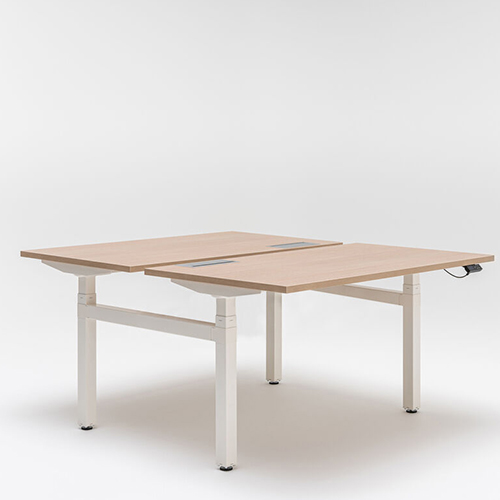In today’s modern workplace, more people are looking for ways to improve their productivity while maintaining their health. One solution that has gained popularity is the sit and stand desk. These versatile desks allow users to switch between sitting and standing throughout the day, promoting a healthier, more dynamic work environment.
What is a Sit and Stand Desk?
A sit and stand desk is an adjustable desk that gives you the option to either sit or stand while working. It can be manually or electronically adjusted to different heights, making it easy to alternate between sitting and standing positions. This flexibility is key to maintaining both comfort and productivity in the workplace.
Health Benefits of Sit and Stand Desks
- Reduces Back Pain: Sitting for long hours puts pressure on your spine and can lead to back pain. Alternating between sitting and standing helps relieve this pressure, allowing your body to move naturally throughout the day.
- Boosts Energy and Mood: Research shows that standing more during the day can help reduce feelings of fatigue and improve overall mood. Movement increases blood flow, which keeps your energy levels up.
- Increases Productivity: Standing desks encourage movement, which can lead to improved focus and alertness. Workers who use sit and stand desks report increased productivity and concentration compared to those who sit all day.
- Lowers Risk of Obesity and Heart Disease: Sitting for prolonged periods has been linked to health risks such as obesity and heart disease. Incorporating more standing into your day helps burn more calories and can reduce these risks.
How to Use a Sit and Stand Desk Effectively
- Alternate Between Sitting and Standing: Don’t stand all day – balance is key. Experts recommend a 1:1 or 2:1 ratio of sitting to standing. Start by standing for 30 minutes every hour and adjust as your body gets used to it.
- Maintain Good Posture: Whether sitting or standing, posture matters. Keep your back straight, shoulders relaxed, and your computer screen at eye level to avoid strain on your neck and back.
- Take Regular Breaks: Even with a sit and stand desk, it’s important to take short breaks to move around. Stretch your legs, walk for a few minutes, and let your body reset.
Conclusion
Investing in a sit and stand desk is a smart way to prioritize both productivity and health in your work routine. With the right balance of sitting and standing, you can improve your posture, reduce the risk of chronic health issues, and stay more engaged throughout the workday.
Frequently Asked Questions (FAQ)
1. How long should I stand at my sit and stand desk?
Experts recommend starting with 15-30 minutes of standing every hour, gradually increasing this to about 30 minutes to an hour per hour of sitting. It’s important not to overdo it; alternating between sitting and standing is key to maintaining comfort and preventing fatigue.
2. Can I stand too much while working?
Yes, standing for prolonged periods can lead to discomfort, fatigue, and even varicose veins. It’s important to balance sitting and standing and to take regular breaks to move around and stretch.
3. Do sit and stand desks really help with back pain?
Yes, using a sit and stand desk can help alleviate back pain by reducing pressure on the spine. Alternating between sitting and standing allows you to change your posture and move more, which can ease discomfort in your lower back and neck.
4. Are sit and stand desks suitable for all types of work?
Sit and stand desks are ideal for most office-based work, including typing, reading, and video calls. However, tasks that require intense focus, like design work, may be easier to do while sitting. The key is to find a balance that works for you and your tasks.
5. Are there any drawbacks to using a sit and stand desk?
The main drawback is that standing for too long can cause fatigue and discomfort. However, by alternating between sitting and standing and using proper ergonomic practices, you can avoid these issues. Additionally, sit and stand desks can be more expensive than traditional desks, but the long-term health benefits often justify the investment.


